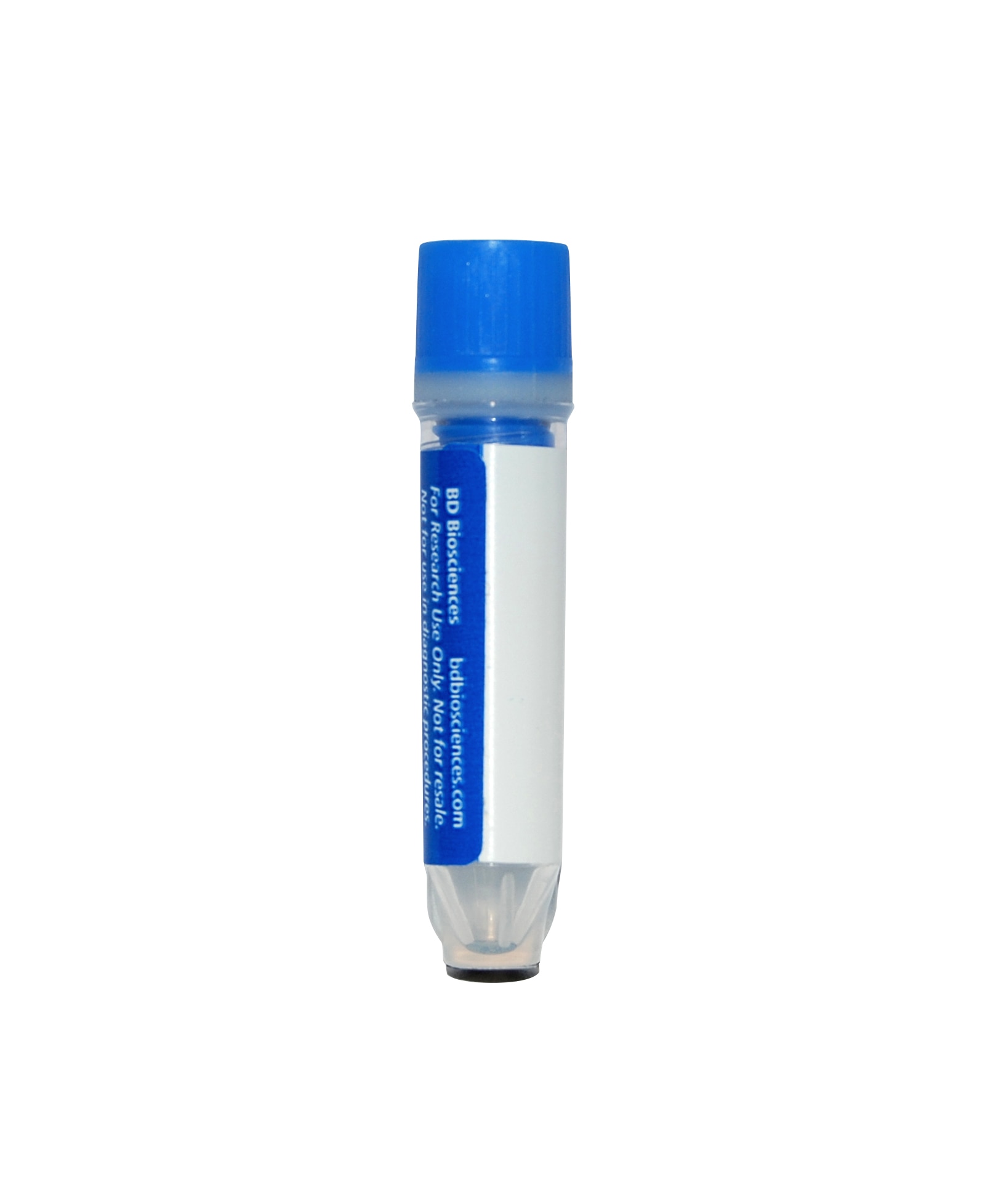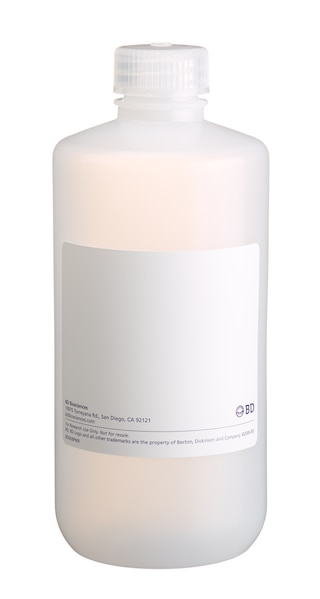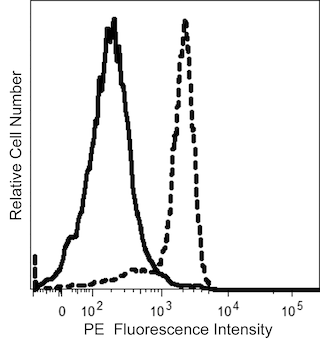Old Browser
This page has been recently translated and is available in French now.
Looks like you're visiting us from United States.
Would you like to stay on the current country site or be switched to your country?
BD® AbSeq Oligo Mouse Anti-Human Chromogranin A
Clone S21-537 (RUO)


Regulatory Status Legend
Any use of products other than the permitted use without the express written authorization of Becton, Dickinson and Company is strictly prohibited.
Preparation And Storage
Recommended Assay Procedures
Put all BD® AbSeq reagents to be pooled into a Latch Rack for 500 µL Tubes (Thermo Fisher Scientific Cat. No. 4900). Arrange the tubes so that they can be easily uncapped and re-capped with an 8-Channel Screw Cap Tube Capper (Thermo Fisher Scientific Cat. No. 4105MAT) and the reagents aliquoted with a multi-channel pipette. BD® AbSeq tubes should be centrifuged for = 30 seconds at 400 × g to ensure removal of any content in the cap/tube threads prior to the first opening.
When using BD® AbSeq intracellular markers with the Single Cell 3' Sequencing Intracellular CITE-seq, cells must first be fixed and permeabilized using the BD Rhapsody™ Intracellular AbSeq Buffer Kit before the antibody-oligo can bind to the protein. Refer to the list of required companion products below and see BD Rhapsody™ System Single-Cell Labelling with BD® AbSeq Ab-Oligos for Intracellular CITE-seq (Doc ID: 23-24464) for the complete BD® AbSeq intracellular multiomics staining protocol. Contact your local Field Application Specialist (FAS) for additional guidance.
Use standard laboratory safety protocols. Read and understand the safety data sheets (SDSs) before handling chemicals. To obtain SDSs, go to regdocs.bd.com or contact BD Biosciences technical support at scomix@bdscomix.bd.com.
Warning: All biological specimens and materials contacting them are considered biohazardous. Handle as if capable of transmitting infection and dispose of with proper precautions in accordance with federal, state, and local regulations. Never pipette by mouth. Wear suitable protective clothing, eyewear, and gloves.
Product Notices
- Please refer to www.bdbiosciences.com/us/s/resources for technical protocols.
- This reagent has been pre-diluted for use at the recommended volume per test. Typical use is 2 µl for 1 × 10^6 cells in a 200-µl staining reaction.
- Caution: Sodium azide yields highly toxic hydrazoic acid under acidic conditions. Dilute azide compounds in running water before discarding to avoid accumulation of potentially explosive deposits in plumbing.
- The production process underwent stringent testing and validation to assure that it generates a high-quality conjugate with consistent performance and specific binding activity. However, verification testing has not been performed on all conjugate lots.
- Source of all serum proteins is from USDA inspected abattoirs located in the United States.
- Please refer to http://regdocs.bd.com to access safety data sheets (SDS).
- Please refer to bd.com/genomics-resources for technical protocols.
- Illumina is a trademark of Illumina, Inc.
- For U.S. patents that may apply, see bd.com/patents.
Data Sheets
Companion Products






Recently Viewed
Chromogranin A (CGA) is a member of the granin family of regulated secretory proteins that are found in secretory granules in endocrine and neuroendocrine cells and released in response to extracellular stimulation. Intracellularly, granins are important for targeting peptide hormones and neurotransmitters by their ability to aggregate in the low pH, high calcium environment of the trans-Golgi network. Extracellularly, peptides formed from proteolytic processing of granins regulate hormone secretion. CGA is a prohormone that can be cleaved into several biologically active peptides, such as pancreastatin, β-granin, vasostatin, catestatin, and parastatin. β-granin is an N-terminal fragment of CGA, while pancreastatin and catestatin are processed from the central region of CGA. Cells of the adrenal medulla, anterior pituitary, cerebral cortex as well as beta cells of the pancreas and a variety of tumor cell lines express CGA. The expression of CGA can be used to monitor the pancreatic differentiation of pluripotent stem cells.
Development References (8)
-
D'Amour KA, Bang AG, Eliazer S, et al . Production of pancreatic hormone-expressing endocrine cells from human embryonic stem cells. Nat Biotechnol. 2006; 24(12):1481-1483. (Biology). View Reference
-
Hendy GN, Bevan S, Mattei MG, Mouland AJ. Chromogranin A. Clin Invest Med. 1995; 18(1):47-65. (Biology). View Reference
-
Kroon E, Martinson LA, Kadoya K, Bang AG, et al. Pancreatic endoderm derived from human embryonic stem cells generates glucose-responsive insulin-secreting cells in vivo. Nat Biotechnol. 2008; 26(4):443-452. (Biology). View Reference
-
Loh YP, Cheng Y, Mahata SK, Corti A, Tota B. Chromogranin A and derived peptides in health and disease. J Mol Neurosci. 2012; 48(2):347-356. (Biology). View Reference
-
Mendieta I, Nuñez-Anita RE, Pérez-Sánchez G, et al. Effect of A549 neuroendocrine differentiation on cytotoxic immune response.. Endocr Connect. 2018; 7(5):791-802. (Clone-specific: Intracellular Staining/Flow Cytometry). View Reference
-
Mouland AJ, Bevan S, White JH, Hendy GN. Human chromogranin A gene. Molecular cloning, structural analysis, and neuroendocrine cell-specific expression. J Biol Chem. 1994; 269(9):6918-6926. (Biology). View Reference
-
Schulz TC, Young HY, Agulnick AD et al. A scalable system for production of functional pancreatic progenitors from human embryonic stem cells. PLoS ONE. 7(5)(Biology). View Reference
-
Taylor CV, Taupenot L, Mahata SK. Formation of the catecholamine release-inhibitory peptide catestatin from chromogranin A. Determination of proteolytic cleavage sites in hormone storage granules. Clin Invest Med. 2000; 275(30):22905-22915. (Biology). View Reference
Please refer to Support Documents for Quality Certificates
Global - Refer to manufacturer's instructions for use and related User Manuals and Technical data sheets before using this products as described
Comparisons, where applicable, are made against older BD Technology, manual methods or are general performance claims. Comparisons are not made against non-BD technologies, unless otherwise noted.
For Research Use Only. Not for use in diagnostic or therapeutic procedures.
